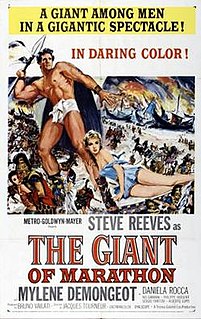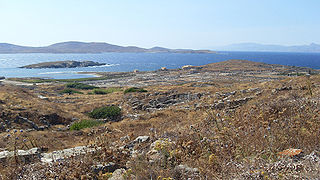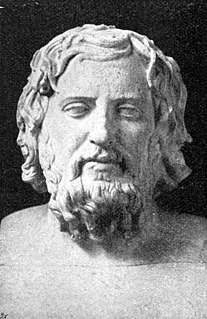 W
WThe Greco-Persian Wars were a series of conflicts between the Achaemenid Empire and Greek city-states that started in 499 BC and lasted until 449 BC. The collision between the fractious political world of the Greeks and the enormous empire of the Persians began when Cyrus the Great conquered the Greek-inhabited region of Ionia in 547 BC. Struggling to control the independent-minded cities of Ionia, the Persians appointed tyrants to rule each of them. This would prove to be the source of much trouble for the Greeks and Persians alike.
 W
WThe Achaemenid destruction of Athens was accomplished by the Achaemenid Army of Xerxes I during the Second Persian invasion of Greece, and occurred in two phases over a period of two years, in 480-479 BCE.
 W
WThe Decree of Themistocles or Troezen Inscription is an ancient Greek inscription, found at Troezen, discussing Greek strategy in the Greco-Persian Wars, purported to have been issued by the Athenian assembly under the guidance of Themistocles. Since the publication of its contents in 1960, the authenticity of the decree has been the subject of much academic debate. The decree directly contradicts Herodotus's account of the evacuation of Attica in 480 BC, in which it is stated that the evacuation was an emergency measure taken only after the Peloponnesian army failed to advance into Boeotia to fight the Persians. If the decree is authentic, the abandonment of Attica was part of a considered strategy aiming to draw the Persians into naval combat at Artemisium or Salamis.
 W
WIn the writings of the Ancient Greek chronicler Herodotus, the phrase earth and water is used to represent the demand of the Persians from the cities or people who surrendered to them.
 W
WThe first Persian invasion of Greece, during the Persian Wars, began in 492 BC, and ended with the decisive Athenian victory at the Battle of Marathon in 490 BC. The invasion, consisting of two distinct campaigns, was ordered by the Persian king Darius the Great primarily in order to punish the city-states of Athens and Eretria. These cities had supported the cities of Ionia during their revolt against Persian rule, thus incurring the wrath of Darius. Darius also saw the opportunity to extend his empire into Europe, and to secure its western frontier.
 W
WThe Giant of Marathon is a 1959 international co-production sword and sandal film, loosely based on the Battle of Marathon. It was directed by Jacques Tourneur and Mario Bava. It starred Steve Reeves as Phillipides. The film was a co-production between Italy's Titanus and Galatea Film and France's Lux Compagnie Cinematographique de France and Societe Cinematographique Lyre.
 W
WThe Perserschutt, a German term meaning "Persian debris" or "Persian rubble", refers to the bulk of architectural and votive sculptures that were damaged by the invading Persian army of Xerxes I on the Acropolis of Athens in 480 BC, in the Destruction of Athens during the Second Persian invasion of Greece.
 W
WUnder the reign of Philip II, the kingdom of Macedonia, initially at the periphery of classical Greek affairs, came to dominate Ancient Greece in the span of just 25 years, largely thanks to the personality and policies of its king. In addition to utilising effective diplomacy and marriage alliances to achieve his political aims, Philip II was responsible for reforming the ancient Macedonian army into an effective fighting force. The Macedonian phalanx became the hallmark of the Macedonian army during his reign and the subsequent Hellenistic period. His army and engineers also made extensive use of siege engines.
 W
WThe second Persian invasion of Greece occurred during the Greco-Persian Wars, as King Xerxes I of Persia sought to conquer all of Greece. The invasion was a direct, if delayed, response to the defeat of the first Persian invasion of Greece at the Battle of Marathon, which ended Darius I's attempts to subjugate Greece. After Darius's death, his son Xerxes spent several years planning for the second invasion, mustering an enormous army and navy. The Athenians and Spartans led the Greek resistance. About a tenth of the Greek city-states joined the 'Allied' effort; most remained neutral or submitted to Xerxes.
 W
WThe Stoa of the Athenians is an ancient portico in the Delphic Sanctuary, Greece, located south of the Temple of Apollo. The southern side of the polygonal wall of the platform forms the north wall of the stoa. It was constructed c. 478 BC-470 BC during the early Classical period. The one-aisled stoa with Ionic colonnade opens toward the southeast. It was dedicated by the Athenians after the Persian Wars.
 W
WThe Ten Thousand were a force of mercenary units, mainly Greeks, employed by Cyrus the Younger to attempt to wrest the throne of the Persian Empire from his brother, Artaxerxes II. Their march to the Battle of Cunaxa and back to Greece was recorded by Xenophon, one of their leaders, in his work Anabasis.
 W
WThe Wars of the Delian League were a series of campaigns fought between the Delian League of Athens and her allies, and the Achaemenid Empire of Persia. These conflicts represent a continuation of the Greco-Persian Wars, after the Ionian Revolt and the first and second Persian invasions of Greece.
 W
WXenophon of Athens was an Athenian-born military leader, philosopher, and historian. Xenophon was elected a commander of the Ten Thousand Greek mercenaries at the age of 30. As the military historian Theodore Ayrault Dodge wrote, "the centuries since have devised nothing to surpass the genius of this warrior". Xenophon established precedents for many logistical operations, and was among the first to use flanking maneuvers and feints. Xenophon's Anabasis recounts adventures of Xenophon and the Ten Thousand in service of Cyrus the Younger, Cyrus's failed campaign to claim the Persian throne from Artaxerxes II of Persia, and the return of Greek mercenaries after Cyrus's death in the Battle of Cunaxa. A student and a friend of Socrates, Xenophon wrote several Socratic dialogues - Symposium, Oeconomicus, Hiero, a tribute to Socrates - Memorabilia, and a recount of the philosopher's trial in 399 BC - Apology of Socrates to the Jury. Xenophon is best known for his historical works. The Hellenica continues directly from the final sentence of Thucydides' History of the Peloponnesian War covering the last seven years of the Peloponnesian War and the subsequent forty two years ending with the Second Battle of Mantinea.
 W
WThe Xerxes Canal was a navigable canal through the base of the Mount Athos peninsula in Chalkidiki, northern Greece, built by king Xerxes I of Persia in the 5th century BCE. It is one of the few monuments left by the Persian Empire in Europe.
 W
WXerxes' Pontoon Bridges were constructed in 480 BC during the second Persian invasion of Greece upon the order of Xerxes I of Persia for the purpose of Xerxes’ army to traverse the Hellespont from Asia into Thrace, then also controlled by Persia.